- Home
- Walter Isaacson
Steve Jobs Page 21
Steve Jobs Read online
Page 21
With a flair for the dramatic, Jobs walked across the dark stage to a small table with a cloth bag on it. “Now I’d like to show you Macintosh in person,” he said. He took out the computer, keyboard, and mouse, hooked them together deftly, then pulled one of the new 3½-inch floppies from his shirt pocket. The theme from Chariots of Fire began to play. Jobs held his breath for a moment, because the demo had not worked well the night before. But this time it ran flawlessly. The word “MACINTOSH” scrolled horizontally onscreen, then underneath it the words “Insanely great” appeared in script, as if being slowly written by hand. Not used to such beautiful graphic displays, the audience quieted for a moment. A few gasps could be heard. And then, in rapid succession, came a series of screen shots: Bill Atkinson’s QuickDraw graphics package followed by displays of different fonts, documents, charts, drawings, a chess game, a spreadsheet, and a rendering of Steve Jobs with a thought bubble containing a Macintosh.
When it was over, Jobs smiled and offered a treat. “We’ve done a lot of talking about Macintosh recently,” he said. “But today, for the first time ever, I’d like to let Macintosh speak for itself.” With that, he strolled back over to the computer, pressed the button on the mouse, and in a vibrato but endearing electronic deep voice, Macintosh became the first computer to introduce itself. “Hello. I’m Macintosh. It sure is great to get out of that bag,” it began. The only thing it didn’t seem to know how to do was to wait for the wild cheering and shrieks that erupted. Instead of basking for a moment, it barreled ahead. “Unaccustomed as I am to public speaking, I’d like to share with you a maxim I thought of the first time I met an IBM mainframe: Never trust a computer you can’t lift.” Once again the roar almost drowned out its final lines. “Obviously, I can talk. But right now I’d like to sit back and listen. So it is with considerable pride that I introduce a man who’s been like a father to me, Steve Jobs.”
Pandemonium erupted, with people in the crowd jumping up and down and pumping their fists in a frenzy. Jobs nodded slowly, a tight-lipped but broad smile on his face, then looked down and started to choke up. The ovation continued for five minutes.
After the Macintosh team returned to Bandley 3 that afternoon, a truck pulled into the parking lot and Jobs had them all gather next to it. Inside were a hundred new Macintosh computers, each personalized with a plaque. “Steve presented them one at a time to each team member, with a handshake and a smile, as the rest of us stood around cheering,” Hertzfeld recalled. It had been a grueling ride, and many egos had been bruised by Jobs’s obnoxious and rough management style. But neither Raskin nor Wozniak nor Sculley nor anyone else at the company could have pulled off the creation of the Macintosh. Nor would it likely have emerged from focus groups and committees. On the day he unveiled the Macintosh, a reporter from Popular Science asked Jobs what type of market research he had done. Jobs responded by scoffing, “Did Alexander Graham Bell do any market research before he invented the telephone?”
CHAPTER SIXTEEN
GATES AND JOBS
When Orbits Intersect
Jobs and Gates, 1991
The Macintosh Partnership
In astronomy, a binary system occurs when the orbits of two stars are linked because of their gravitational interaction. There have been analogous situations in history, when an era is shaped by the relationship and rivalry of two orbiting superstars: Albert Einstein and Niels Bohr in twentieth-century physics, for example, or Thomas Jefferson and Alexander Hamilton in early American governance. For the first thirty years of the personal computer age, beginning in the late 1970s, the defining binary star system was composed of two high-energy college dropouts both born in 1955.
Bill Gates and Steve Jobs, despite their similar ambitions at the confluence of technology and business, had very different personalities and backgrounds. Gates’s father was a prominent Seattle lawyer, his mother a civic leader on a variety of prestigious boards. He became a tech geek at the area’s finest private school, Lakeside High, but he was never a rebel, hippie, spiritual seeker, or member of the counterculture. Instead of a Blue Box to rip off the phone company, Gates created for his school a program for scheduling classes, which helped him get into ones with the right girls, and a car-counting program for local traffic engineers. He went to Harvard, and when he decided to drop out it was not to find enlightenment with an Indian guru but to start a computer software company.
Gates was good at computer coding, unlike Jobs, and his mind was more practical, disciplined, and abundant in analytic processing power. Jobs was more intuitive and romantic and had a greater instinct for making technology usable, design delightful, and interfaces friendly. He had a passion for perfection, which made him fiercely demanding, and he managed by charisma and scattershot intensity. Gates was more methodical; he held tightly scheduled product review meetings where he would cut to the heart of issues with lapidary skill. Both could be rude, but with Gates—who early in his career seemed to have a typical geek’s flirtation with the fringes of the Asperger’s scale—the cutting behavior tended to be less personal, based more on intellectual incisiveness than emotional callousness. Jobs would stare at people with a burning, wounding intensity; Gates sometimes had trouble making eye contact, but he was fundamentally humane.
“Each one thought he was smarter than the other one, but Steve generally treated Bill as someone who was slightly inferior, especially in matters of taste and style,” said Andy Hertzfeld. “Bill looked down on Steve because he couldn’t actually program.” From the beginning of their relationship, Gates was fascinated by Jobs and slightly envious of his mesmerizing effect on people. But he also found him “fundamentally odd” and “weirdly flawed as a human being,” and he was put off by Jobs’s rudeness and his tendency to be “either in the mode of saying you were shit or trying to seduce you.” For his part, Jobs found Gates unnervingly narrow. “He’d be a broader guy if he had dropped acid once or gone off to an ashram when he was younger,” Jobs once declared.
Their differences in personality and character would lead them to opposite sides of what would become the fundamental divide in the digital age. Jobs was a perfectionist who craved control and indulged in the uncompromising temperament of an artist; he and Apple became the exemplars of a digital strategy that tightly integrated hardware, software, and content into a seamless package. Gates was a smart, calculating, and pragmatic analyst of business and technology; he was open to licensing Microsoft’s operating system and software to a variety of manufacturers.
After thirty years Gates would develop a grudging respect for Jobs. “He really never knew much about technology, but he had an amazing instinct for what works,” he said. But Jobs never reciprocated by fully appreciating Gates’s real strengths. “Bill is basically unimaginative and has never invented anything, which is why I think he’s more comfortable now in philanthropy than technology,” Jobs said, unfairly. “He just shamelessly ripped off other people’s ideas.”
When the Macintosh was first being developed, Jobs went up to visit Gates at his office near Seattle. Microsoft had written some applications for the Apple II, including a spreadsheet program called Multiplan, and Jobs wanted to excite Gates and Co. about doing even more for the forthcoming Macintosh. Sitting in Gates’s conference room, Jobs spun an enticing vision of a computer for the masses, with a friendly interface, which would be churned out by the millions in an automated California factory. His description of the dream factory sucking in the California silicon components and turning out finished Macintoshes caused the Microsoft team to code-name the project “Sand.” They even reverse-engineered it into an acronym, for “Steve’s amazing new device.”
Gates had launched Microsoft by writing a version of BASIC, a programming language, for the Altair. Jobs wanted Microsoft to write a version of BASIC for the Macintosh, because Wozniak—despite much prodding by Jobs—had never enhanced his version of the Apple II’s BASIC to handle floating-point numbers. In addition, Jobs wanted Microsoft to write app
lication software—such as word processing and spreadsheet programs—for the Macintosh. At the time, Jobs was a king and Gates still a courtier: In 1982 Apple’s annual sales were $1 billion, while Microsoft’s were a mere $32 million. Gates signed on to do graphical versions of a new spreadsheet called Excel, a word-processing program called Word, and BASIC.
Gates frequently went to Cupertino for demonstrations of the Macintosh operating system, and he was not very impressed. “I remember the first time we went down, Steve had this app where it was just things bouncing around on the screen,” he said. “That was the only app that ran.” Gates was also put off by Jobs’s attitude. “It was kind of a weird seduction visit, where Steve was saying, ‘We don’t really need you and we’re doing this great thing, and it’s under the cover.’ He’s in his Steve Jobs sales mode, but kind of the sales mode that also says, ‘I don’t need you, but I might let you be involved.’”
The Macintosh pirates found Gates hard to take. “You could tell that Bill Gates was not a very good listener. He couldn’t bear to have anyone explain how something worked to him—he had to leap ahead instead and guess about how he thought it would work,” Hertzfeld recalled. They showed him how the Macintosh’s cursor moved smoothly across the screen without flickering. “What kind of hardware do you use to draw the cursor?” Gates asked. Hertzfeld, who took great pride that they could achieve their functionality solely using software, replied, “We don’t have any special hardware for it!” Gates insisted that it was necessary to have special hardware to move the cursor that way. “So what do you say to somebody like that?” Bruce Horn, one of the Macintosh engineers, later said. “It made it clear to me that Gates was not the kind of person that would understand or appreciate the elegance of a Macintosh.”
Despite their mutual wariness, both teams were excited by the prospect that Microsoft would create graphical software for the Macintosh that would take personal computing into a new realm, and they went to dinner at a fancy restaurant to celebrate. Microsoft soon dedicated a large team to the task. “We had more people working on the Mac than he did,” Gates said. “He had about fourteen or fifteen people. We had like twenty people. We really bet our life on it.” And even though Jobs thought that they didn’t exhibit much taste, the Microsoft programmers were persistent. “They came out with applications that were terrible,” Jobs recalled, “but they kept at it and they made them better.” Eventually Jobs became so enamored of Excel that he made a secret bargain with Gates: If Microsoft would make Excel exclusively for the Macintosh for two years, and not make a version for IBM PCs, then Jobs would shut down his team working on a version of BASIC for the Macintosh and instead indefinitely license Microsoft’s BASIC. Gates smartly took the deal, which infuriated the Apple team whose project got canceled and gave Microsoft a lever in future negotiations.
For the time being, Gates and Jobs forged a bond. That summer they went to a conference hosted by the industry analyst Ben Rosen at a Playboy Club retreat in Lake Geneva, Wisconsin, where nobody knew about the graphical interfaces that Apple was developing. “Everybody was acting like the IBM PC was everything, which was nice, but Steve and I were kind of smiling that, hey, we’ve got something,” Gates recalled. “And he’s kind of leaking, but nobody actually caught on.” Gates became a regular at Apple retreats. “I went to every luau,” said Gates. “I was part of the crew.”
Gates enjoyed his frequent visits to Cupertino, where he got to watch Jobs interact erratically with his employees and display his obsessions. “Steve was in his ultimate pied piper mode, proclaiming how the Mac will change the world and overworking people like mad, with incredible tensions and complex personal relationships.” Sometimes Jobs would begin on a high, then lapse into sharing his fears with Gates. “We’d go down Friday night, have dinner, and Steve would just be promoting that everything is great. Then the second day, without fail, he’d be kind of, ‘Oh shit, is this thing going to sell, oh God, I have to raise the price, I’m sorry I did that to you, and my team is a bunch of idiots.’”
Gates saw Jobs’s reality distortion field at play when the Xerox Star was launched. At a joint team dinner one Friday night, Jobs asked Gates how many Stars had been sold thus far. Gates said six hundred. The next day, in front of Gates and the whole team, Jobs said that three hundred Stars had been sold, forgetting that Gates had just told everyone it was actually six hundred. “So his whole team starts looking at me like, ‘Are you going to tell him that he’s full of shit?’” Gates recalled. “And in that case I didn’t take the bait.” On another occasion Jobs and his team were visiting Microsoft and having dinner at the Seattle Tennis Club. Jobs launched into a sermon about how the Macintosh and its software would be so easy to use that there would be no manuals. “It was like anybody who ever thought that there would be a manual for any Mac application was the greatest idiot,” said Gates. “And we were like, ‘Does he really mean it? Should we not tell him that we have people who are actually working on manuals?’”
After a while the relationship became bumpier. The original plan was to have some of the Microsoft applications—such as Excel, Chart, and File—carry the Apple logo and come bundled with the purchase of a Macintosh. “We were going to get $10 per app, per machine,” said Gates. But this arrangement upset competing software makers. In addition, it seemed that some of Microsoft’s programs might be late. So Jobs invoked a provision in his deal with Microsoft and decided not to bundle its software; Microsoft would have to scramble to distribute its software as products sold directly to consumers.
Gates went along without much complaint. He was already getting used to the fact that, as he put it, Jobs could “play fast and loose,” and he suspected that the unbundling would actually help Microsoft. “We could make more money selling our software separately,” Gates said. “It works better that way if you’re willing to think you’re going to have reasonable market share.” Microsoft ended up making its software for various other platforms, and it began to give priority to the IBM PC version of Microsoft Word rather than the Macintosh version. In the end, Jobs’s decision to back out of the bundling deal hurt Apple more than it did Microsoft.
When Excel for the Macintosh was released, Jobs and Gates unveiled it together at a press dinner at New York’s Tavern on the Green. Asked if Microsoft would make a version of it for IBM PCs, Gates did not reveal the bargain he had made with Jobs but merely answered that “in time” that might happen. Jobs took the microphone. “I’m sure ‘in time’ we’ll all be dead,” he joked.
The Battle of the GUI
At that time, Microsoft was producing an operating system, known as DOS, which it licensed to IBM and compatible computers. It was based on an old-fashioned command line interface that confronted users with surly little prompts such as C:>. As Jobs and his team began to work closely with Microsoft, they grew worried that it would copy Macintosh’s graphical user interface. Andy Hertzfeld noticed that his contact at Microsoft was asking detailed questions about how the Macintosh operating system worked. “I told Steve that I suspected that Microsoft was going to clone the Mac,” he recalled.
They were right to worry. Gates believed that graphical interfaces were the future, and that Microsoft had just as much right as Apple did to copy what had been developed at Xerox PARC. As he freely admitted later, “We sort of say, ‘Hey, we believe in graphics interfaces, we saw the Xerox Alto too.’”
In their original deal, Jobs had convinced Gates to agree that Microsoft would not create graphical software for anyone other than Apple until a year after the Macintosh shipped in January 1983. Unfortunately for Apple, it did not provide for the possibility that the Macintosh launch would be delayed for a year. So Gates was within his rights when, in November 1983, he revealed that Microsoft planned to develop a new operating system for IBM PCs featuring a graphical interface with windows, icons, and a mouse for point-and-click navigation. It would be called Windows. Gates hosted a Jobs-like product announcement, the most lavish thus far in M
icrosoft’s history, at the Helmsley Palace Hotel in New York.
Jobs was furious. He knew there was little he could do about it—Microsoft’s deal with Apple not to do competing graphical software was running out—but he lashed out nonetheless. “Get Gates down here immediately,” he ordered Mike Boich, who was Apple’s evangelist to other software companies. Gates arrived, alone and willing to discuss things with Jobs. “He called me down to get pissed off at me,” Gates recalled. “I went down to Cupertino, like a command performance. I told him, ‘We’re doing Windows.’ I said to him, ‘We’re betting our company on graphical interfaces.’”
They met in Jobs’s conference room, where Gates found himself surrounded by ten Apple employees who were eager to watch their boss assail him. Jobs didn’t disappoint his troops. “You’re ripping us off!” he shouted. “I trusted you, and now you’re stealing from us!” Hertzfeld recalled that Gates just sat there coolly, looking Steve in the eye, before hurling back, in his squeaky voice, what became a classic zinger. “Well, Steve, I think there’s more than one way of looking at it. I think it’s more like we both had this rich neighbor named Xerox and I broke into his house to steal the TV set and found out that you had already stolen it.”
Gates’s two-day visit provoked the full range of Jobs’s emotional responses and manipulation techniques. It also made clear that the Apple-Microsoft symbiosis had become a scorpion dance, with both sides circling warily, knowing that a sting by either could cause problems for both. After the confrontation in the conference room, Gates quietly gave Jobs a private demo of what was being planned for Windows. “Steve didn’t know what to say,” Gates recalled. “He could either say, ‘Oh, this is a violation of something,’ but he didn’t. He chose to say, ‘Oh, it’s actually really a piece of shit.’” Gates was thrilled, because it gave him a chance to calm Jobs down for a moment. “I said, ‘Yes, it’s a nice little piece of shit.’” So Jobs went through a gamut of other emotions. “During the course of this meeting, he’s just ruder than shit,” Gates said. “And then there’s a part where he’s almost crying, like, ‘Oh, just give me a chance to get this thing off.’” Gates responded by becoming very calm. “I’m good at when people are emotional, I’m kind of less emotional.”

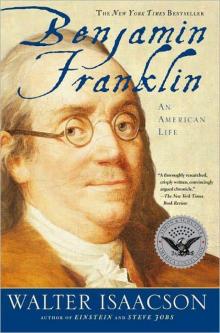 Benjamin Franklin: An American Life
Benjamin Franklin: An American Life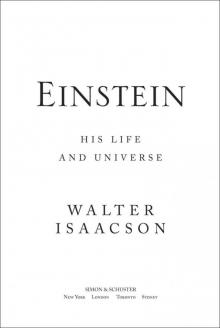 Einstein: His Life and Universe
Einstein: His Life and Universe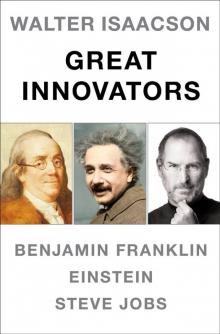 Walter Isaacson Great Innovators e-book boxed set
Walter Isaacson Great Innovators e-book boxed set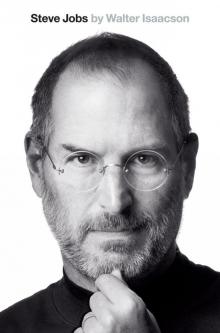 Steve Jobs
Steve Jobs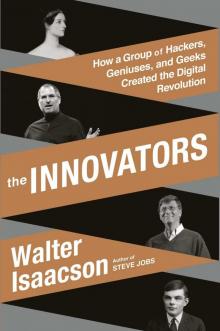 The Innovators
The Innovators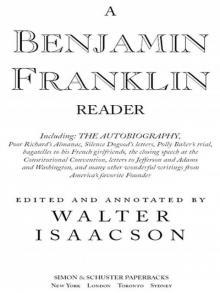 A Benjamin Franklin Reader
A Benjamin Franklin Reader